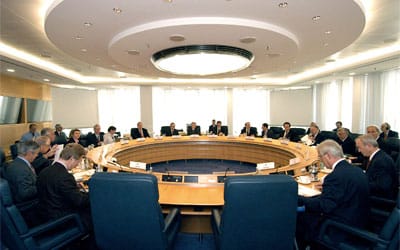Consumer spending in the United States declined for a second consecutive month in January as incomes increased slower than expected, a sign consumers were focused on boosting their savings at the start of the year.
Personal spending declined 0.2 percent in January, following a 0.3 percent drop the previous month, the Department of Commerce reported on Monday. A median estimate of economists called for a decline of 0.1 percent.
When adjusted for inflation based on the personal consumption expenditures deflator, personal spending increased 0.3 percent.
The same report also showed that personal income from all sources increased 0.3 percent in January following a similar increase the previous month. Disposable incomes adjusted for inflation rose 0.9 percent, the largest increase since December 2012.
Monday’s figures suggest Americans are more concerned with reining in their debts. The savings rate jumped to 5.5 percent, which was also the biggest increase since December 2012.
Personal consumption expenditures, the Federal Reserve’s guidepost for inflation, rose only 0.2 percent in the 12 months to January. That was the lowest rate since October 2009. The PCE rate had increased at an annual rate of 0.8 percent in December.
So called core PCE, which strips away volatile goods such as food and energy, increased 1.3 percent following an identical uptick the previous month.
With inflation well below the Federal Reserve’s 2 percent target, central bank officials will probably wait longer before beginning to raise interest rates. Fed Chairwoman Janet Yellen told Congress last week that the Fed will hold off on adjusting rates in the next few meetings, as tame inflation and a volatile international economy continue to provide impetus for accommodative policies.
The Federal Open Market Committee’s next scheduled meetings are on March 17-18. The Fed will also release revised GDP, unemployment and inflation forecasts in two weeks’ time.
The markets had previously expected an interest rate adjustment by midyear, reflecting sustained growth in the labour market. On Friday the Labor Department is expected to show the creation of 240,000 jobs in February, which may once again raise expectations for a June rate adjustment.
The Fed has been slowly normalizing monetary policy over the past year, having put an end to its record bond-buying program last October. The Fed’s last rate adjustment occurred in December 2008 when policymakers slashed interest rates to 0.25 percent. According to the Fed’s last summary of economic projections, policymakers expect interest rates to average 1.125 percent by the end of the year.
Tradersdna is a leading digital and social media platform for traders and investors. Tradersdna offers premiere resources for trading and investing education, digital resources for personal finance, market analysis and free trading guides. More about TradersDNA Features: What Does It Take to Become an Aggressive Trader? | Everything You Need to Know About White Label Trading Software | Advantages of Automated Forex Trading



































